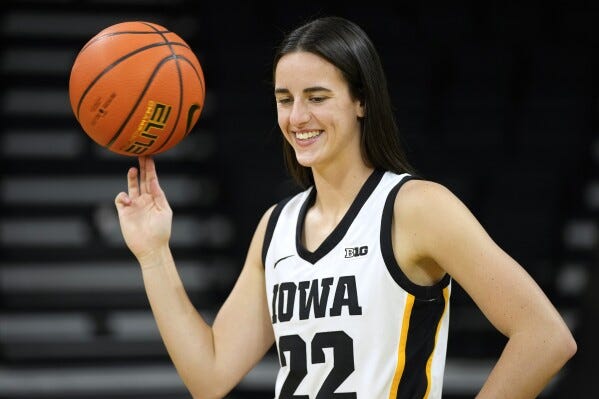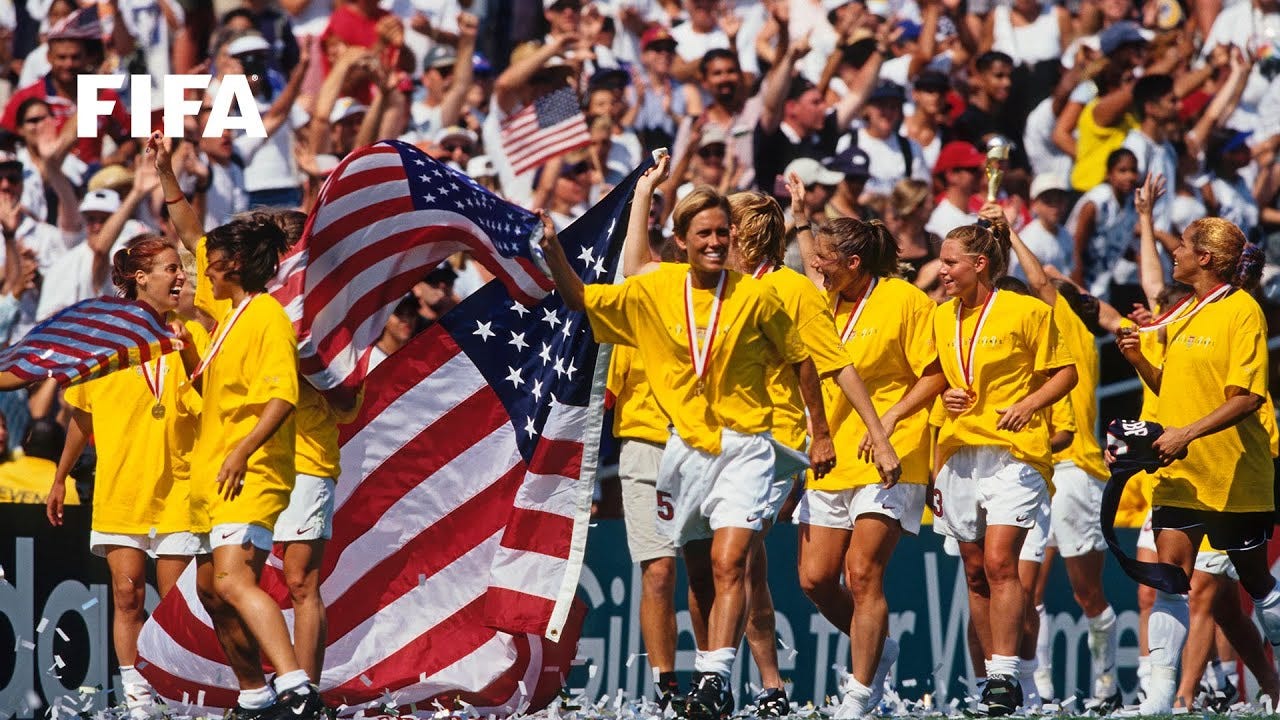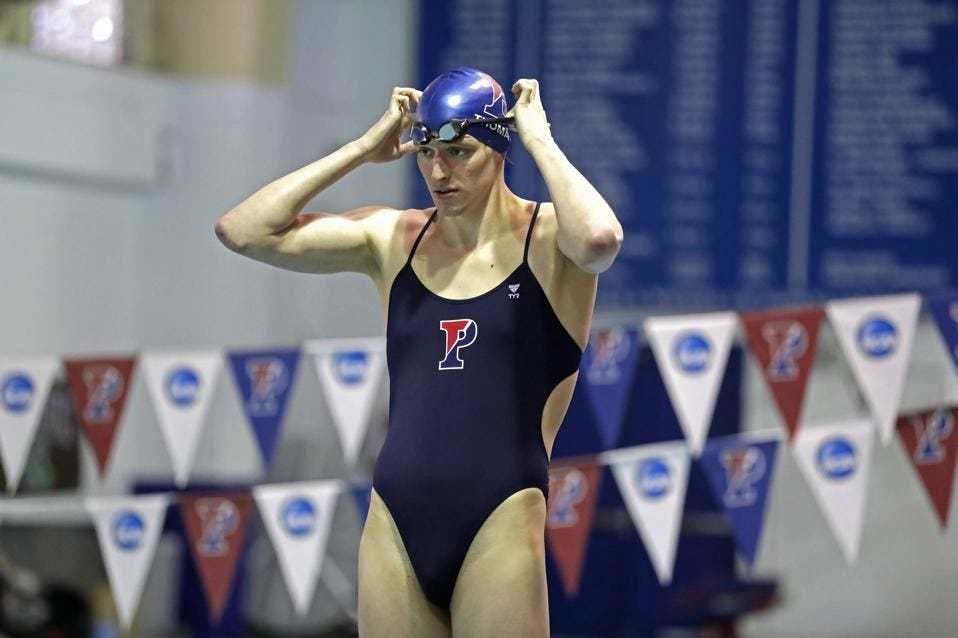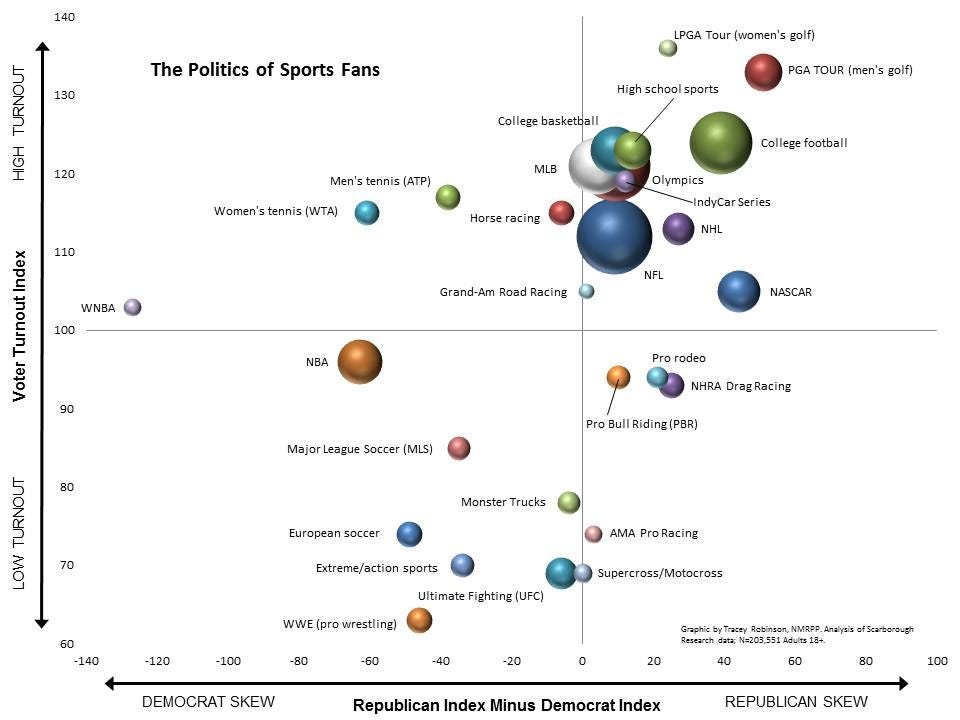Women’s basketball—once thought of as an unwatchable product—has been thrusted into the limelight lately with the success of Iowa’s superstar Caitlin Clark. The Hawkeyes NCAA semi-final game against UConn drew the largest audience for any basketball game on ESPN ever. Millions more viewers than other NBA or men’s college games on the network.
Are we at a tipping-point moment for girls sports? Will the future public actually be gathering round the TV and packing out arenas to watch midseason WNBA action? Having intense sports-talk radio debates breaking down the games?
A few thoughts about women’s team sports in general.
Follow the Money
Live sports have been a saving grace for television networks over the last decade as more people dropped traditional cable plans for streaming services. They’re the last remaining major programming that viewers will watch in real-time and potentially sit through advertising.
The major networks are vested in the continued popularity of all sports, and are happy to try and sell you on the new games in town. In spite of next to no interest in the WNBA, ESPN has been aggressively pushing the league for years after acquiring the broadcasting rights for cheap. Open the ESPN-app in the summer and you’ll often have to scroll through the WNBA scores at the top to get to the results from last night’s baseball.
Women’s sports franchises have become a trendy investment as well. Companies and venture funds are betting that soccer and basketball teams will start turning profits. Corporate sponsorship has increased in the last few years, likely as more of a charitable gesture of woke good-faith than anything else. Nonetheless, a small machine is starting to form to really push women’s athletics.
For the players currently though, the riches in women’s team sports aren’t to be found on the court. The average WNBA salary in 2023 was equivalent to about that of a tax accountant or a Jr. software developer. Even the max-salary for superstars of $242k is not exactly a fortune considering you only get 10-15 playing years.
In the budding U.S National Women’s Soccer League (NWSL) the situation is more dire. League minimum pay in 2023 was $36,400, which is actually a few grand less than what a full-time California McDonald’s employee would make under the new fast food worker minimum wage.
The big money in women’s team sports still comes from the off the court endorsement deals.
You may not have heard of Haley Cavinder. She won’t be going pro, nor will she be setting any NCAA basketball records. That’s not a problem though, she’s already making a million dollars a year in sponsorships and influencer deals due to her large social media presence.
As with many traditionally male dominated fields, an attractive girl who happens to be reasonably competent at the craft can launch a career off that novelty alone. It’s the athletic equivalent of the “gamer girl” making millions off doing twitch streams.
Sure, there’s some correlation between performance and the amount made in endorsements, but it’s nowhere near men’s sports where you generally need to be a star to get the most sponsorships.
Part of the reason for this is there are almost no real pro women’s sports fans. Nobody cares if the teams win or lose, the whole game is a bit of a “you go girl” novelty.
The Fan Problem
The viability of a professional sports league hinges on having an engaged group of fans for each franchise. You need regular paying customers, spectators, and broadcast viewers.
In America, women’s college athletics have been more popular than professional leagues because they have a built-in fanbase of students/alumni for each school. Additionally, Title IX regulations requiring institutions to have an equal number of male/female teams forces athletic departments to subsidize the women’s sports that don’t generate money for universities. NCAA softball doesn’t need to worry about being a profitable venture, the league won’t go bankrupt.
Another way to solve the fan problem is patriotism. Every few years during the Olympics and World Cup people get excited about women’s sports teams as representatives of their nation. Once the international competition is over then people stop caring again.
The incredible success of the 1999 Women’s World Cup in America spawned many failing professional soccer leagues. The WNBA has consistently struggled to turn a profit and relies on a subsidy from the NBA. We’ve yet to see any team sports league generate meaningful passion from fans on the pro-level.
There might be an aspect of this where it’s just inherently less compelling to watch groups of women band together and compete than groups of men. The most successful institutions in women’s athletics are for individual sports. The WTA in tennis, the LPGA in golf. Even female participation in UFC has generally been well-received from its start. Viewers seem more comfortable with a feminine catfight than a strange tribal battle of high-test gal-squads.
Take the Caitlin Clark mania as an example. The intrigue here is in the singular player, not the team. It also a marketing-plus that her game is more graceful than past basketball stars. It’s fun watching a girl shoot deep 3-pointers, it has more flair than watching 6-foot-9 Britney Griner bully other women in the post.
Benefits of a Less-Refined Game
Sometimes a less “polished” game can make for more entertaining action. Watching my little cousin’s little league baseball is mildly thrilling because there’s always a real chance that some kid is going to make an error on every ball hit into play.
Women’s sports have some of these advantages due to the physical limitations of the players. In Tennis, women’s serves aren’t as overpowering and they hit double faults more often. This creates some fun variance and a better chance for a player to win a game when they aren’t serving.
In general, women’s sports commissioners shouldn’t be trying to replicate the same exact game as the men are playing. Small rule tweaks to promote more excitement and competition are welcome. If someone wanted to see the “best of the best” play a sport in its traditional manner you would just watch the men’s game. In committing to watching a designated “women’s sport” you’ve already signed up for gimmicks from the start.
The Culture War
If you told me 10 years ago conservatives would start becoming vocal about “the importance of women’s sports” I’d have called you insane. And yet here we are. The culture war works in mysterious ways.
The far-right have become champions of women’s athletics in response to the invasion of men identifying as women competing against biological women. The same guy who would’ve laughed at the idea of watching a second of the WNBA is now very concerned about protecting the sanctity of the women’s game.
I don’t expect this much of this contingent to become massive fans of female sports leagues. Once they find out the politics of most players they’ll likely be less enthused. But, I suppose it does broaden the coalition of potential viewers beyond the typical liberal audience.











I can't comment on the US, but since 2007 the All-England Tennis Championships at Wimbledon have given women equal prize money but for less work, the best of three, rather than five, sets. If that trend is becoming commonplace in other sports, is it any wonder that some men choose to 'self-identify' as women in order to compete?
https://inews.co.uk/sport/tennis/wimbledon-2023-prize-money-how-much-men-women-winners-same-2480080
Women's football (soccer) is increasingly popular here but all the major teams are owned by the same clubs that own the men's teams. The popularity of soccer is part of our culture though.
The WTA would be on par with the ATP if not for horrific management decisions and most players refusing to entertain the idea of playing bo5 sets because either way they still get equal prize money.